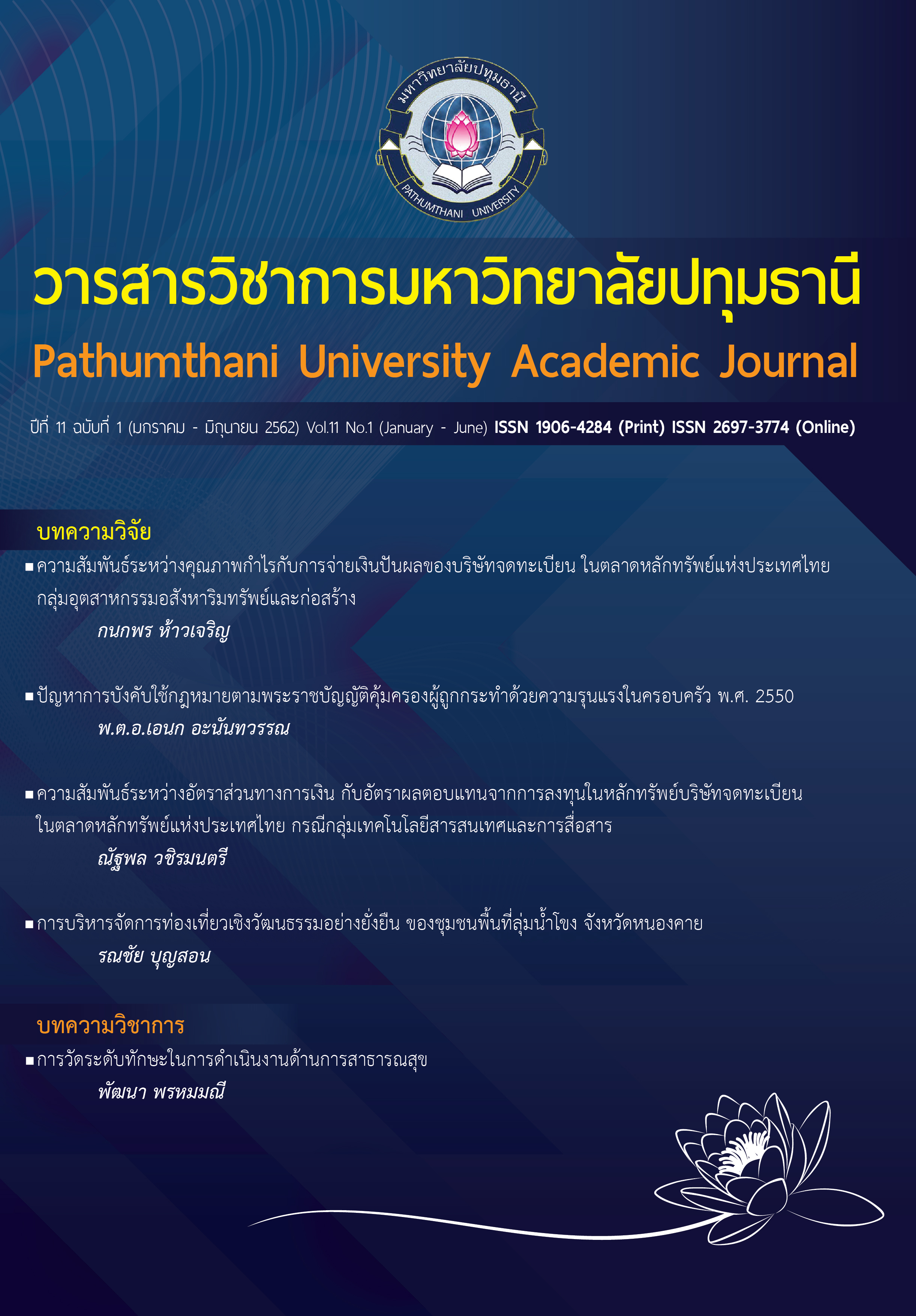Skill Measurement for Public Health Operations
Keywords:
Skills, Skills measurementAbstract
Skills were Expertise or ability to act or practice related to physical, intellectual or social abilities. They derived from training, accuracy, fluency. Expertise and durability and can be measured. Skills were divided into 6 levels as: 1) reflex movements, 2) basic-fundamental movements, 3) perceptual abilities, 4) physical abilities, 5) skilled movements, and 6) non-discursive communication
The development of skill range consists of 7 steps as: 1) perception, 2) readiness, 3) guided response, 4) mechanism, 5) complex overt response, 6) adaptation, and 7) origination.
Skills measurement was test of procedure or test item that meets purpose, time, environment, and met scope of practice, Skills can be measured with various measuring tools, including scale-estimation test, Check list test, and observation. The features of skills measurement tool are as follows: 1) validity, 2) reliability, 3) Discrimination, 4) objectivity, 5) difficulty, 6) efficiency, 7) searching, 8) fair, 9) definite, and 10) exemplary. All 10 measuring instruments were considered as excellent measuring instruments. In general, if it had only five qualifications as: 1) validity, 2) reliability, 3) discrimination, 4) difficulty, and 5) efficiency, it was a good quality measurement tool.
References
มหาวิทยาลัยสุโขทัยธรรมาธิราช. (2556). การพัฒนาเครื่องมือวัดด้านเจตพิสัยและทักษะพิสัย. นนทบุรี: มหาวิทยาลัยสุโขทัยธรรมาธิราช.
ราชบัณฑิตยสถาน. (2552). พจนานุกรมฉบับราชบัณฑิตยสถาน พ.ศ. 2552. กรุงเทพฯ: นานมี.
สุวิทย์ มูลคำ และอรทัย มูลคำ. (2546). 19 วิธีการจัดการเรียนรู้เพื่อพัฒนาความรู้และทักษะ. กรุงเทพฯ: ภาพการพิมพ์.
Harrow, A. J. (1972). A taxonomy of the psychomotor domain. New York: David McKay Co.
Simpson, E. (1972). The classification of educational objectives in the psychomotor domain. Washington, DC: Gryphon House.
Downloads
Published
How to Cite
Issue
Section
License
บทความที่ได้รับการตีพิมพ์เป็นลิขสิทธิ์ของวารสารมหาวิทยาลัยปทุมธานี
ข้อความที่ปรากฎในบทความแต่ละเรื่อง เป็นความคิดเห็นส่วนตัวของผู้เขียน กองบรรณาธิการไม่จำเป็นต้องเห็นด้วยเสมอไป และไม่มีส่วนรับผิดชอบใด ๆ ถือเป็นความรับผิดชอบของผู้เขียนแต่เพียงผู้เดียว



